 |
 |
 |
 |
 |
 |
 |
Natalie Jeremijenko is an assistant professor of art at the University of California, San
Diego. She is a new media artist who works at the intersection of contemporary art,
science, and engineering. Her work has been shown at the
Guggenheim, MOMA and the Whitney Biennial. She has recently held positions in the
Department of Mechanical Engineering at Yale; the Advanced Computer Graphics
Center/Media Research Lab at NYU; and Distinguished Visiting Critic in the Department
of Art, Virginia Commonwealth University. She earned a B.S. in Neuroscience and
Biochemistry at Griffith University, Queensland, Australia, and went on to earn a B.F.A.
with Honors from the Royal Melbourne Institute of Technology.
|
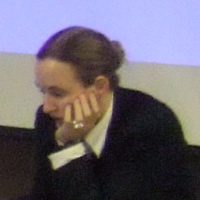 |
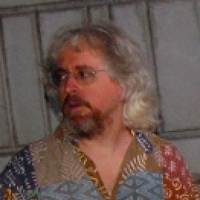 |
Larry Yaeger is a professor known for his work in artificial life, complexity,
information theory, artificial neural networks, computer graphics,
genetic algorithms, and ecological simulation. His work involves the
digital synthesis of life-like processes. Before joining academia, he spent 17
years at Apple Computer where among many other things he developed Inkwell, Apple's
automatic hand writing recognition system. He also wrote Polyworld, the well known
artificial life computational ecology. He earned his M.S. at Polytechnic Institute of New
York and earned his B.S. in aerospace engineering at Purdue University.
|
Andy Holtin is an assistant professor at the School of Fine Arts at the University of North
Texas. His kinetic sculptures, the most recent involving sound as well as motion, center
around a discrete, often endlessly laborious and futile activity. He earned his M.F.A. at
the Virginia Commonwealth University.
|
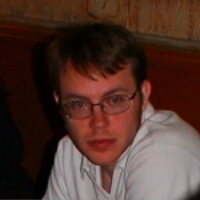 |
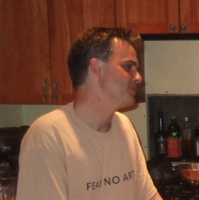 |
Bill Seeley teaches philosophy at Franklin and Marshall College. His welded steel
constructions and mobiles have been exhibited internationally. His focus relates to how
the mind perceives form. He has taught philosophy at Yale University and CUNY and has
taught art at Columbia University and at Franklin W. Olin College of Engineering, among
other places. He is the author of numerous scholarly publications on the general topic of
aesthetics and cognition. He earned an M.F.A from Columbia University and a
B.A. in philosophy, also from Columbia University.
|
Max Kazemzadeh is an assistant professor of electronic media art at the University of
North Texas. His work explores the spectacle of human interaction through the context
and influence of multiple interfaces. He addresses phenomena such as how the mind
and body choreographs a simple hand-shake. He earned his M.F.A. at the Parsons
School of Design, New York in Art and Technology (MTECH) and earned his B.F.A. at the
University of North Texas. He taught at Pratt University in New York and his pieces have
been exhibited internationally.
|
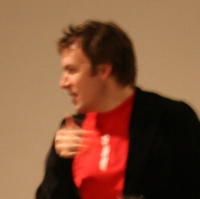 |
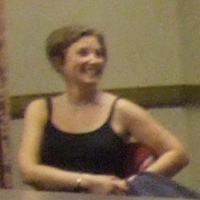 |
Christy Georg is a Boston-area artist. Her kinetic sculptures speak to her interest in how change over time forces reinterpretation of the object. She
has been awarded residencies at the Berwick Research Institute in Boston, the Vermont
Studio Center, the Roswell AIR Program, and the McDowell Colony. She earned an M.F.A. from the
Massachusetts College of Art and a B.F.A. from the Kansas City Art Institute.
|
Norbert Herber teaches in the I.U. Department of Telecommunications. He is a sound
artist and explores digital media to produce works with titles such as Particle
Swarm Optimization, and Automatic Body. His current work can be described as an
integration of simulated autonomous agents with video projections and music. He
earned his Ph.D. at the Planetary Collegium, at the University of Plymouth, England.
|
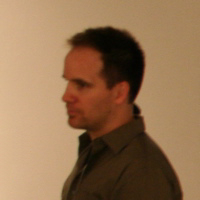 |
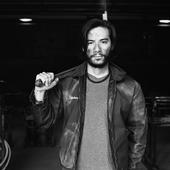 |
Galo Moncayo is an assistant professor in sculpture at Indiana University, Bloomington.
His work involves using multiple media to create dynamic situations that are curiously
comparable to everyday life. He has been a visiting artist and guest lecturer at George
Washington University in Washington DC and at St. Mary's College in Maryland. He earned an MFA in Sculpture from Virginia Commonwealth University and a BFA
in Sculpture from the Maryland Institute College of Art. He has exhibited in
galleries and spaces in New York, Washington, DC, and Monterrey, Mexico, among other
cities, including the recent Eventos Aleatorios in Monterrey. He is represented by the
Arte Cinco gallery in Monterrey, Mexico.
|
Michael Brady is a PhD student in cognitive science at Indiana University.
His work centers around robotics and speech recognition and synthesis based
on articulatory (motor coordination) models. He addresses questions such as: when
does sound become speech? And: how does the mind synchronize with an incoming
signal? His B.A. minor was in sculpture, also from Indiana University. He has
lived and shown work in Portland, Oregon, New York, Mazatlan, Mexico, Columbus,
Ohio, and Bloomington.
|
 |
|

